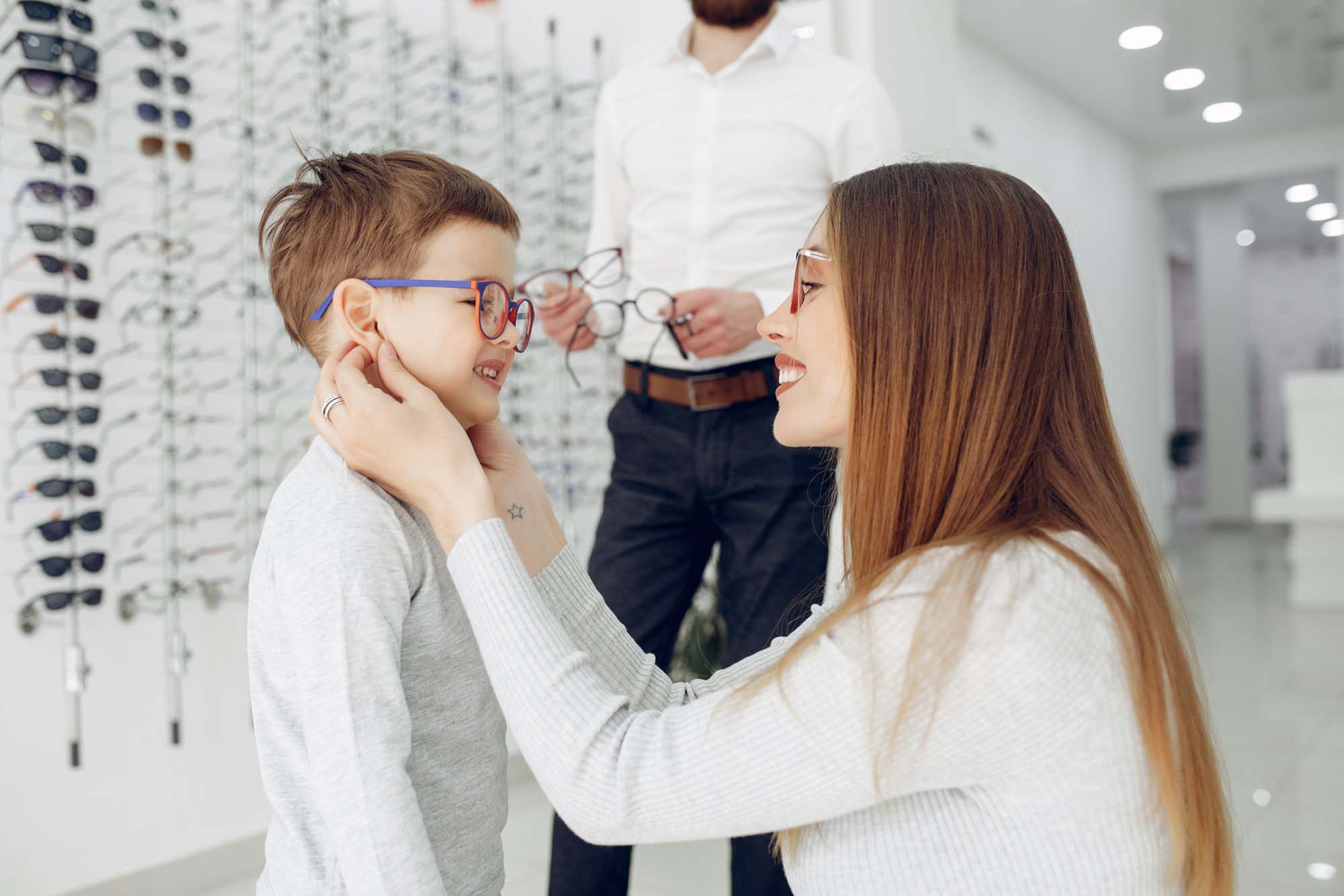
Just like glasses for adults, children’s eyeglasses aren’t one-size-fits all: they come in a variety of styles, colors, and shapes. It can be a challenge to find a pair of glasses that will not only be durable enough to suit your child’s needs, but also to find a pair they’ll be willing to wear! Here are four things you should consider when it comes to choosing glasses for children.
1. Consider Why Your Child Needs Them
Doctors recommend an infant eye exam as early as 6 months, and once a year after that. Children’s eyes change rapidly, so annual eye exams make sure they always have a current prescription. With that said, whether your child needs glasses for vision correction or to correct other issues such as eye misalignment will determine what sort of glasses they’ll need in terms of frames and lens types.
2. Think About Material and Durability
Kids need frames designed for kids, and children’s glasses are made to be more durable to fit a child’s high activity levels. In the past, children’s frames were almost exclusively made from lightweight plastic, which was less likely to be bent or broken, but today, manufacturing has improved to allow durable metal frames for children.
Metal frames are usually lighter and a little more adjustable – they can bend but usually don’t break – but the hinges are usually less flexible and more prone to damage. Depending on your child’s age and whether you think they’re responsible enough to properly care for glasses can help you determine which type of frames would be best.
3. Make Sure You Have a Proper Fit
Children are naturally not as developed as adults and this includes the bridge of their noses, where glasses would normally rest on an adult’s face; this is why glasses for infants typically have a strap that goes around the child’s head to keep them on. For older children, a frame’s fit needs to be properly checked to make sure it stays in place.
If the fit is not correct, eyeglasses will slip on a child’s face when they look down. Rather than readjusting, many children will usually simply look over the eyeglasses. If your child is constantly pushing up their frames on their nose, the fit is likely incorrect.
4. Find Frames Your Child Will Love
Despite vision problems, many children are reluctant to wear eyeglasses, either because they are uncomfortable or because they’re worried about seeming “uncool.” Although there’s definitely an adjustment period for your child’s first pair of glasses, involving your child in the decision of which glasses they will wear helps them become invested and more likely to cooperate, which can make the struggle to get them to wear the eyeglasses a little bit easier.
There are lots of options when it comes to children’s glasses, including color and frame type, but we hope you don’t feel overwhelmed! At Vision Pro Optical, our optical staff can help guide you to the lenses that will work best for your child and help you find the perfect pair to make them happy and help them see clearly. To learn more about children’s eye exams and frame options, call Vision Pro Optical today!


